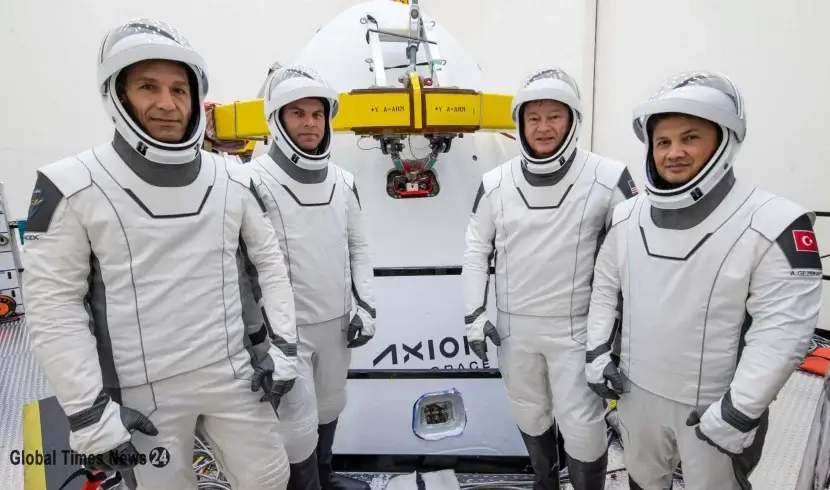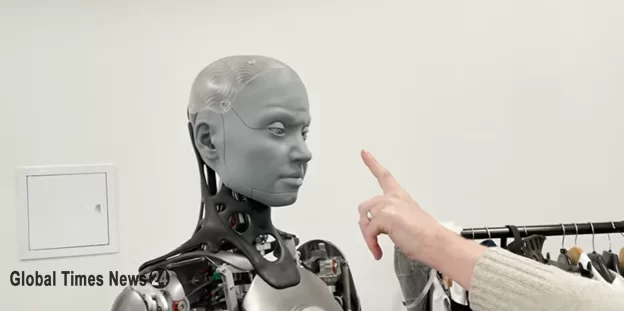The simple explanation of the General Relativity
Table of Contents (Show / Hide)

When Albert Einstein first published the Special Theory of relativity in 1905, he was either vehemently ridiculed or ignored. People thought it was just too weird and radical to be real. This guy is not even a working scientist, he’s just a patent clerk, some said. How dare he challenge the greatest scientist that ever lived – Isaac Newton, whose theories have been proven to be correct for hundreds of years. Some politicians even insulted his religious heritage and called it "Jewish science" – a way to subvert traditional culture and thinking. How did Einstein feel about this?
Well, he wasn’t satisfied with his theory either. He was unhappy because the theory only applied to observers moving in a straight line at a constant speed. The theory did not apply if Gravity was present or if the observer was accelerating. Einstein was known, however, to have a very vivid imagination. And one day, as legend has it, while observing a window washer on a ladder near his patent office, he had one of his famous thought experiments that would go on to change the course of scientific history. He imagined what would happen if the worker were to fall. But he didn’t think of it the way you and I would think of it. What was his thought experiment? And how did it lead to perhaps the greatest single scientific theory of the past 100 years.
For most people, imagining this would just conjure up disturbing images of the poor guy landing on the ground below, and the story would not have a happy ending. Einstein thought about it differently. He put himself in the window washer’s perspective, and imagined not what would happen when he met the ground, but what he would experience as he was falling. What he realized was that if he was falling, gravity would be the only force acting on him. He would be accelerating towards the ground, but since the ground would not be pushing up on his body, he would feel no weight. With no wind resistance, he would be in free fall. And this would be no different than being weightless in space.
In a way, gravity and acceleration were different ways to describe the same thing. This is where Einstein had a huge insight. The way to connect gravity with the theory of relativity was through the idea of acceleration, since the two are equivalent. Einstein imagined being in a room with no windows. And if the room had a bathroom scale handy, what would happen if you stepped on the scale. Well, if anywhere stationary on earth, you would weigh 80 Kgs, or whatever your weight is. Now he imagined being in the same room in space. Now, what if the room was on a space on a space ship that accelerating in an upward direction at 9.8 meters/second/second, which happens to be exactly the same as gravitational acceleration on earth. What would happen if he stepped on the scale then?
Well, the scale would read 80 kgs, just like it did on earth. The acceleration on a spaceship would appear to him, inside the room as being indistinguishable from being stationary on earth. If he didn’t know he was on a space ship, he could just as well presume he was on earth. There would be no way to tell the difference. Or would there? Einstein thought about this, and asked himself if there was a way to tell the difference. He imagined what would happen if he took a flashlight or a laser beam and pointed it from one side of the room to the other, as the space ship was accelerating upwards. If he had a sensitive measuring device, he could measure the height of the light on the other side of the room. He realized that the height he would find on the other side would be slight lower than the source of the light. Why? Because the floor of the room would be rushing upwards at ever faster speeds, as the light was propagating across the room. since the room was accelerating upwards at 9.8 meters/second/second. The light beam would appear to curve downward.
However, if you were on earth, and you measured the two heights, you may think that there should be no difference. That light should go straight to the other side of the room. Although this appears to be common sense. Einstein thought it can’t be because it violates the principle of equivalence. Acceleration of the room on a space should be no different than the room under the influence of gravity on earth. He realized that this meant light must bend in the presence of a gravitational field. But how could this be, because light always takes the shortest path between two points? It should be going straight. Then he realized, wait a minute, maybe the light IS taking the shortest path between two points. Maybe the shortest path is not a straight line. He imagined the curved surface of the earth. The shortest path between any two distant points on earth, if you're restricted to the surface of the earth, is never a straight line, because you have to traverse the curvature of earth. So, the shortest path is always curved. So maybe gravity somehow causes a curvature of space itself. He hypothesized that in space, perhaps a straight line is NOT the shortest path between two points, and that perhaps in the presence of mass and energy, space somehow becomes curved, so that the shortest path that light can take is a curved path. This was the key insight that Einstein had about gravity. But in order to express this mathematically, it required very complicated mathematics that even a genius like Einstein could not easily figure out. He contacted an old buddy of his from college days, mathematician Marcel Grossman. Grossman had just finished his PhD dissertation on the topic of, wouldn’t you know it, the geometry of curved spaces, called Riemannian Geometry. With his help, Einstein figured out the mathematics of curved space time. And this curved geometry is really the basis of General relativity. Now, you have to realize how different this was than the status quo of the time which was Newtonian space and time, which presumed that time was fixed, space was fixed, and gravity was a mysterious force that could act at a distance from one massive object to another without touching it. In this model, Gravity did not affect the underlying space and time, but acted within it. Einstein’s theory was now that gravity was not a force between massive objects, but something that emerges from the interaction of space and massive objects.
John Wheeler would later summarize this theory in 12 short words: “Space-time tells matter how to move; matter tells space-time how to curve.” That’s it. That’s General relativity in a nutshell. And orbits of planets could now be explained not by some mysterious force that acts at a distance, but rather an interaction that takes place locally with mass or energy, and the space around it.
And this can be visually represented by the kind of graphic you see here to show how massive objects like planets form orbits around other massive objects. It’s important to note that the trampoline analogy you normally see on TV shows a 2D plane used for visualization purposes only. The interaction occurs obviously in three dimensions, not just two. It looks more like this graphic. This is much more difficult to visualize and animate, so it is typically not used. But it is more accurate. However, in order for this theory to really be taken seriously, it had to make a prediction that could be tested. And that prediction could not be explained in any other way. This test came in the form of Mercury. Mercury’s orbit had been a mystery for decades because it was unusual. All planets orbited the sun in an ellipse. The planet closest to the sun, Mercury, also orbited in an ellipse. But it did something weird. It had something called a precession. What this means is that its ellipse never closes. The point of the orbit that was farthest from the sun advances a little bit every time Mercury goes around the Sun. It’s as if the ellipse itself is orbiting the sun. No one could ever figure this out using Newton’s equations. When Einstein applied his new curved space theory to this orbit, the new theory predicted exactly the precession that Mercury actually has. Finally, a theory perfectly matched the observation which had been a mystery for decades. You can only imagine how Einstein felt when he figured this out.
There was a time when Einstein was the only person in the world who realized that the universe actually works this way. But many skeptics still remained. Many scientists still had doubts about Einstein’s theory. But the most fool-proof confirmation of his theory came 4 years after he published it. That’s when a team led English Astronomer, Arthur Eddington. in 1919, photographed stars near the sun during a total solar eclipse. If Einstein was right, then the position of the stars near the sun would appear different than predicted location based on where they should be as seen at night. This would happen because as light passed near the sun, it should be bent by the curvature of space due to gravity. And that’s exactly what he found, confirming that the theory was correct. This is the moment Einstein became a celebrity. You might ask, ok I get it. I get space curvature. But it’s called space-time. How does time enter into the picture? Why is this not just a distortion of space but also of time?
This is where Einstein’s first theory, special relativity comes in. The essential presumption in special relativity is that light always moves at the same speed regardless of perspective or reference frame. This means that light will have the same speed in an accelerating reference frame as it will in a resting reference frame. If this is the case then it means that the speed of light in the presence of gravity will be the same as its speed in empty space. Speed equals distance over time. S = D/T But since the distance traveled by the beam of light in a gravitational field is longer due the curving of space, in order for the speed of light to remain constant, time itself must pass slower in the gravitational field relative to time in empty space. In other words, time increases proportionately with the curvature of space near a gravitational field, compared to empty space, to keep the speed of light constant in both reference frames. This is why time is considered distorted by gravity along with space. It is really just part of the same fabric called space-time. This has some massive implications. It implies that the observer experiencing no gravity at all, sees the clock in a gravitational field running slower. This means that the clocks on earth run slightly slower than clocks on the international space station. This effect has been confirmed by many experiments, and is taken into account in order keep the clocks of GPS satellites in sync with the clocks on earth. Otherwise, your GPS apps like google maps would give you inaccurate locations. You should know that although General relativity is an astounding achievement by one the greatest scientists of all time, it does not answer everything. Questions remain. Although it tells us how gravity works, it doesn’t tell us what exactly it is. Why do massive objects distort space time? What is the underlying connection between mass and space-time? It also predicts regions of space where space time can get so distorted that nothing escapes including light.
This is called a black hole. But it shows that within these black holes lies something that seems impossible, and that is a mass concentrated to an infinitely small point with infinite density. This is called the singularity and is theorized to exist within the black hole. General relativity fails to work at this singularity. But infinities like this in science usually indicate some sort of incompleteness of theories rather than things that actually exist. To figure this out what happens at these really small scales, we need our old friend Quantum mechanics. But alas, the equations of quantum mechanics make no sense in terms of singularities, or in terms of general relativity. So, for now the two theories remain incompatible. If we can bring these two theories together, and truly understand how gravity behaves at the tiniest scales, we may answer the question of what gravity actually is. We will need a new theory to figure this one out – and that theory is called quantum gravity.
URL :
News ID : 2109


 Turkey's 1st Manned Space Mission Scheduled for Launch This Week
Turkey's 1st Manned Space Mission Scheduled for Launch This Week
 This is exactly what experts warned of Elon Musk
This is exactly what experts warned of Elon Musk
 Elon Musk and OpenAI Clash Again Over Apple's ChatGPT Integration
Elon Musk and OpenAI Clash Again Over Apple's ChatGPT Integration
 Biological men may be able to get pregnant soon
Biological men may be able to get pregnant soon
 Hajj 2023: The plight of the excluded pilgrims and agents
Hajj 2023: The plight of the excluded pilgrims and agents
 Albert Einstein: The Genius Who Changed the World
Albert Einstein: The Genius Who Changed the World
 Pop music and 'Grease' star Olivia Newton-John dead at age 73
Pop music and 'Grease' star Olivia Newton-John dead at age 73
 Major sports events of 2022
Major sports events of 2022
 Best way to quit smoking - Doctor's opinion & my experience - 100% guaranteed
Best way to quit smoking - Doctor's opinion & my experience - 100% guaranteed
 Nakba 75: Palestinian citizens of Israel are exiles in their own land
Nakba 75: Palestinian citizens of Israel are exiles in their own land
